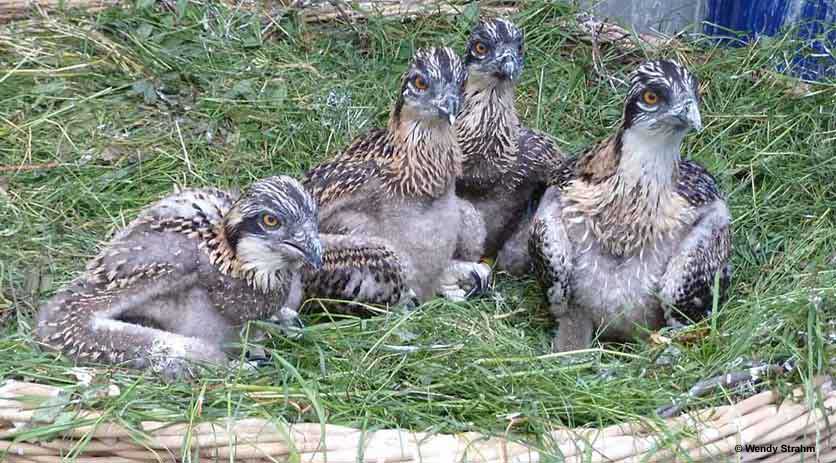 Our project consists of moving Osprey chicks (about 6 week old) from where they were born to Switzerland, where they will live in an aviary for about a month, and then once they are ready to fly, they will be released. They will then be fed and monitored for about a month and a half until they are ready to migrate. This process is known as “hacking” and has already been successfully undertaken in conservation projects in many other places in the world.
Our project consists of moving Osprey chicks (about 6 week old) from where they were born to Switzerland, where they will live in an aviary for about a month, and then once they are ready to fly, they will be released. They will then be fed and monitored for about a month and a half until they are ready to migrate. This process is known as “hacking” and has already been successfully undertaken in conservation projects in many other places in the world.
Ospreys are migratory species that in principle return to the place where they were born–or think that they were born–to breed (this is known as philopatry). Once an Osprey population disappears from an area where they previously bred, it is extremely unlikely that birds will return by themselves to breed there later, as they have lost their “tradition”.
The trick to restore Osprey populations to where they have disappeared in the past is to make them believe that they come from the place where you want them to return. This has been the basis for all other reintroduction projects that have taken place in the USA, in England, in Spain, in Italy and in Portugal.
We are collaborating with a number of countries in Europe which have healthy and prosperous Osprey populations to develop a convention to bring about 60 young Ospreys (over a period of five years, that is on average 12/year) to Switzerland for release. There will be no harm to the “parent population” in removing these birds from where they were born (to see why click here), and the individuals that are removed will in theory even have a better chance of survival.
The IUCN Guidelines for Reintroductions and other Conservation Translocations have been closely adhered to and this project has received the support of numerous conservation organisations and international Osprey experts. We have received federal and cantonal authorisation to undertake the project in the Swiss Canton of Fribourg. The Rita Roux Foundation has supported the project to ensure that we have the basic necessary funding available to undertake the release project in Fribourg. However, to accomplish all that we wish to do in terms of communication, monitoring, protecting old trees, building artificial nests, and helping conserve Ospreys in the areas where they winter we need to raise more funds.
Up to now the project has been developed on an entirely voluntary basis. However, to fully achieve all our goals a minimum level of professionalization (involving paying specialists) needs to be ensured. We would also welcome some volunteers available and interested to help when the birds are going to be released. Therefore if you are interested in supporting the project, either by donating time or money, you can become an Osprey Champion.
